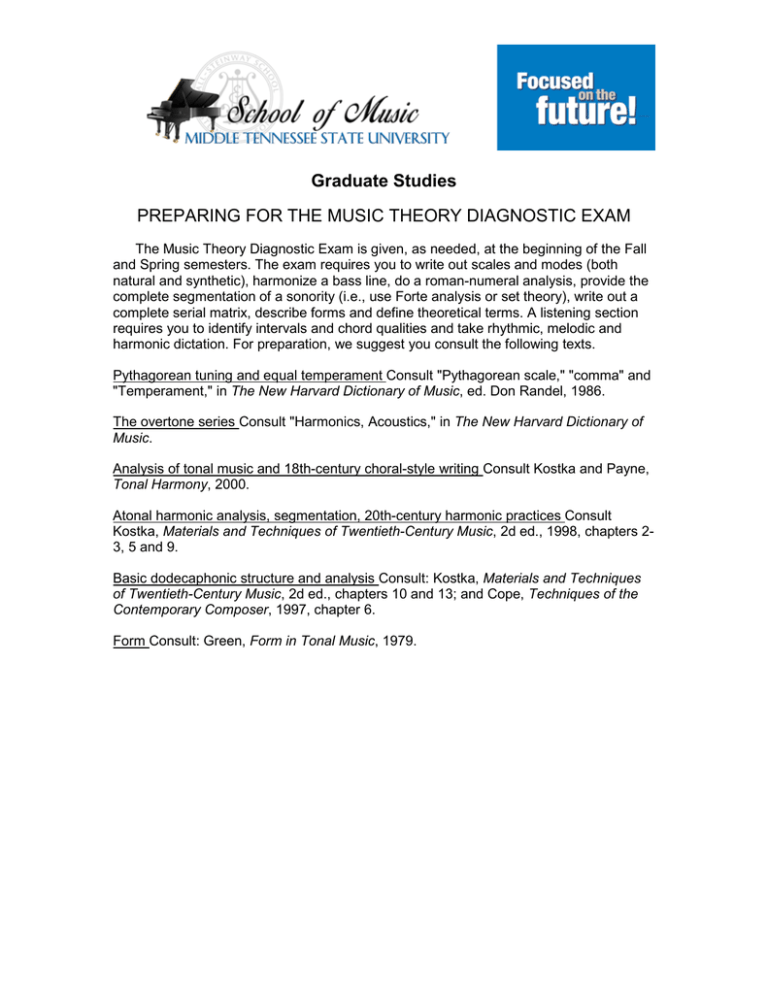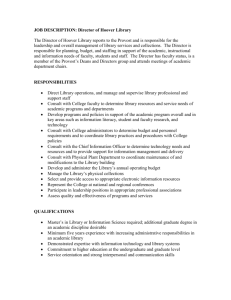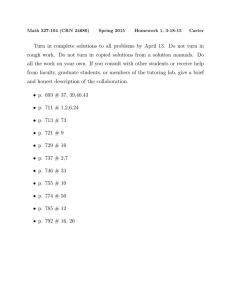Graduate Studies PREPARING FOR THE MUSIC THEORY DIAGNOSTIC EXAM
advertisement

Graduate Studies PREPARING FOR THE MUSIC THEORY DIAGNOSTIC EXAM The Music Theory Diagnostic Exam is given, as needed, at the beginning of the Fall and Spring semesters. The exam requires you to write out scales and modes (both natural and synthetic), harmonize a bass line, do a roman-numeral analysis, provide the complete segmentation of a sonority (i.e., use Forte analysis or set theory), write out a complete serial matrix, describe forms and define theoretical terms. A listening section requires you to identify intervals and chord qualities and take rhythmic, melodic and harmonic dictation. For preparation, we suggest you consult the following texts. Pythagorean tuning and equal temperament Consult "Pythagorean scale," "comma" and "Temperament," in The New Harvard Dictionary of Music, ed. Don Randel, 1986. The overtone series Consult "Harmonics, Acoustics," in The New Harvard Dictionary of Music. Analysis of tonal music and 18th-century choral-style writing Consult Kostka and Payne, Tonal Harmony, 2000. Atonal harmonic analysis, segmentation, 20th-century harmonic practices Consult Kostka, Materials and Techniques of Twentieth-Century Music, 2d ed., 1998, chapters 23, 5 and 9. Basic dodecaphonic structure and analysis Consult: Kostka, Materials and Techniques of Twentieth-Century Music, 2d ed., chapters 10 and 13; and Cope, Techniques of the Contemporary Composer, 1997, chapter 6. Form Consult: Green, Form in Tonal Music, 1979.




